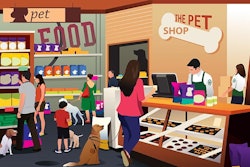
As economic indicators continue to improve in many countries, including the U.S., are consumers starting to feel more optimistic about their own financial situations? While election-related polls might say no, a new global study from NielsenIQ (NIQ), “Mid-Year Consumer Outlook: Guide to 2025,” offers some promising signs that may portend well for pet food.
“Global consumers were pressured at the beginning of the year, but the climate has shifted in the last six months, with resilient consumers regaining some confidence and spending power,” wrote Lauren Fernandes, NIQ vice president of global thought leadership, who added that consumers are shifting from “cautious to intentional consumption.”
Improving economic metrics
What does that shift look like? For one metric, 32% of global consumers surveyed by NIQ still say they’re worse off financially, but that percentage has dropped from 34% in January 2024 and mid-year 2023, and from 39% in January 2023. At the same time, the share of consumers saying they’re better off is rising, from 26% in January 2023 and 28% in January 2024 to 30% today. (Presumably, the financial position of the remaining 38% has stayed the same.)
Economic inequality plays a role here, as in many situations, though it seems to be improving, too. “In the last year, we’ve seen a continued shift toward the more financially secure end of this spectrum, where 27% of surveyed consumers are either unimpacted or thriving financially, compared with 21% from this period in 2023,” Fernandes wrote.
The percentage of people still struggling financially has fallen from 21% in mid-2023 to 17% now. Yet, despite Fernandes’ opening comments about consumers moving away from caution, those who say they are doing OK financially but are still spending cautiously represent 40% of respondents, essentially unchanged from a year ago (39%).
New ways to look at discounts, value
From a marketing perspective, the most interesting data concerns how consumers globally define concepts like “discount” and “value.” According to the NIQ survey, they have “embraced (and expect) broader value from the discount concept,” meaning affordability and price still form the foundation but other things now factor into purchase decisions.
For example, sustainability, newness and innovation, in that order, might sway consumers when combined with a discount: 70% of survey respondents said they would purchase an energy-efficient product or one that has lower costs to use; 67% are likely to try a new brand with a lower price; and 64% would purchase a product that has “innovated to make it as affordable as possible.” Health and homemade/natural may also contribute to discount purchases but to a lesser extent (48% and 45%, respectively).
I find the innovation angle to discounting intriguing, and can imagine that playing out in pet food and treat development — possibly in combination with sustainability? For instance, a pet food or treat now at a lower price because the producer has found a way to decrease its energy costs. (And that is clearly communicated to pet owners.)
The survey report also examines the tension between “lower cost to use” (think larger and bulk packages) and “lower cost to buy” (smaller packages at lower prices). I encourage skimming Fernandes’ report for additional insights on where consumer mindsets are today.

















